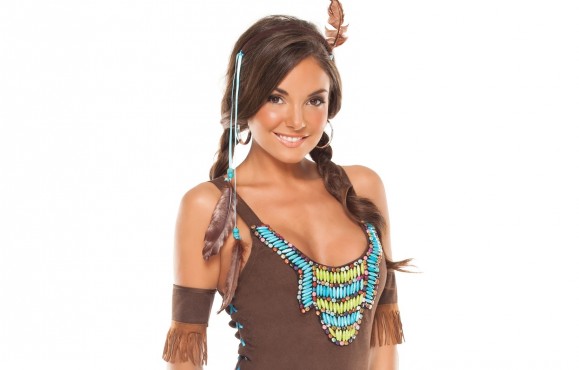Holidays always seem to bring out the worst in people. Families fight at Thanksgiving, that one uncle always gets drunk and says outrageous things over winter break, and your friends always drink more green beer on St. Paddy’s than they can handle. Oct. 31 is the day on which seemingly nice folks join the already ignorant and reveal their inner racist and/or misogynistic tendencies. Rather than dressing up as Chewbacca or the tooth fairy, it’s funnier — nay, edgier even — to pretend to be ‘exotic’ and wear a culturally appropriative costume. Right?
When we steal pieces of a culture that we don’t identify with and manipulate those stolen pieces of culture, we engage in cultural appropriation. Often, this manipulation manifests as commodification, and fetishization. Why is this harmful?
If you look into the cultural stereotypes that are articulated by Halloween costumes, you’ll find that there often lies a violent history behind those stereotypes. For example, geishas were often treated as objects of male pleasure. The myth of the Indian princess blatantly invokes the sexualization of indigenous women. These women were often (and many continue to be) subjected to horrific violence because of this reductive sexualization. Did you realize that your ‘sexy’ costume was perpetuating these kinds of harmful stereotypes?
Chances are, if you are comfortable masquerading around in someone else’s culture, you have no idea what that culture truly entails. Wearing a “Cherokee princess” costume does not suddenly endow you with the knowledge and empathy required to even begin understanding how the legacy of settler colonialism and residential schools has destroyed the lives and cultures of hundreds of indigenous peoples. Many culturally appropriative costumes make light of generations of marginalization, and some trivialize genocide. These costumes are not just tasteless and offensive; they are acts of theft; they are acts of cultural genocide; and they are blatant acts of ignorance and privilege.
It is important to note that people identify strongly with their religions and their cultures. People have fought to keep their cultures and their peoples alive. For example, indigenous peoples have fought and continue to fight genocide, colonialism, marginalization — the list goes on. It is powerful, then, when an indigenous person dresses in the fabric of his or her peoples. It is powerful when indigenous folks participate in a drum circle, because they are refusing to submit to hundreds of years of history that meant to violently eradicate indigenous peoples.
It is insulting, then, when a non-Indigenous person wears some cheap simulation of that fabric, purchased from a kiosk in the mall, reducing a piece of culture and spirituality to a mere costume. Identity is not something you try on for a day before becoming your “normal” self again. Identity is something that you live.
Six ways to tell if your Halloween costume is racist and/or culturally appropriative
- Is your costume imitating another culture/race/ethnicity? Are you dressing like a geisha or an “Indian princess?” If yes, stop it.
- Moreover, does your costume focus on a common negative stereotype? If so, you’re literally the worst. Did you apply makeup to change your skin colour? Are you trying to look blue like a smurf? Bless your heart. Are you applying blackface? Stop it. Stay at home and question everything that you have become.
- Would you feel uncomfortable wearing your costume in front of the people it’s imitating? Are you a non-indigenous person wearing a headdress? How would you feel in front of an indigenous person while wearing that headdress? Horribly ashamed? We hope so.
- Is your costume fetishizing or hypersexualizing another group of people? Are you a “sexy Pocahontas?” A “sexy geisha?” Stop it. Consider the amount of sexualized violence encountered by women of colour, who have been historically reduced and fetishized as objects of male desire.
- Does your costume incorporate a derogatory term such as “ghetto” or ethnic slur such as “gypsy”? Stop it, we hate you.
- Does your costume include wearing a bindi or a similar culture symbol (this includes burqas, niqabs, and turbans)? Do you truly have any idea of the significance of these items to thousands of people? We didn’t think so.
If you answered ‘yes’ to any of these questions, kindly re-evaluate your costume choice.









